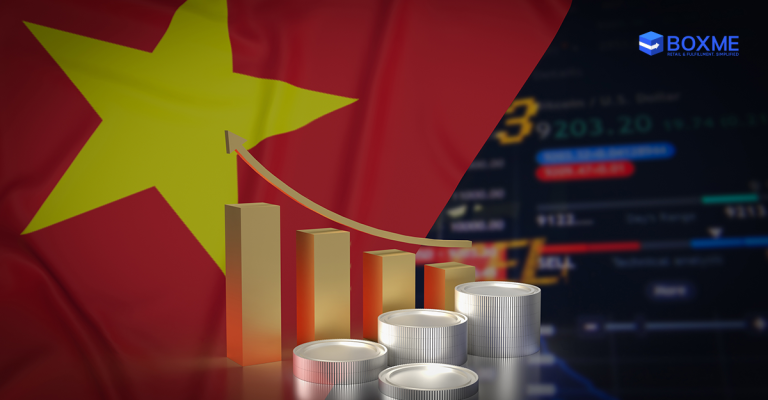Despite the “headwinds” from global uncertainty, Vietnam’s economy continues to be a bright spot of sustained growth, as evidenced by the 8.2% figure in the third quarter. However, to realize the ambitious 2045 vision, relying solely on traditional driving forces is not enough. The new era requires internal strength, with the private economic sector as the main driving force. According to Mr. Tim Evans, CEO of HSBC Vietnam, the biggest challenge now is to unblock the “bloodline” of capital, creating a launching pad for businesses to take off.
4 strategic pillars to strengthen internal strength
To maintain growth momentum and transition to a value-added economic model, experts say Vietnam is focusing on four long-term strategic pillars:
- Digital Transformation & Technological Innovation: The Golden Key to Overcoming the “Middle-Income Trap”, Aiming for a Digital Economy of 30% of GDP by 2030 as Traditional Drivers Gradually Reach Their Limits.
- Deep international integration: Consolidating position through FTAs and strategic partnerships, not only expanding development space but also attracting high-quality FDI.
- Perfecting institutions & legal framework: Creating a transparent and fair business environment according to international standards – this is the foundation to attract and promote all investment resources.
- Private economic development: Identified as the most important driving force, the Government is focusing on removing barriers in capital and land and promoting R&D to make this sector a pillar of the economy.
Capital “bloodline”: Vital factor for private enterprises
A conducive business environment is necessary, but not sufficient. Mr. Tim Evans emphasized that the “vital” factor for the private sector is the ability to access sustainable capital.
Currently, bank credit is still the main capital channel. However, the increasingly “hot” demand for capital requires diversification of mobilization channels. This poses a dual requirement for both businesses and macro managers.
For businesses: Upgrade to “attract” foreign capital
To reach out to the big world, businesses must proactively “upgrade” themselves. This is not only about building a transparent financial foundation, complying with international reporting standards, but also applying sustainable practices (ESG). This is the “common language” and the key factor to attract global investors.
On the macro side: Expanding international capital market connectivity
At the same time, Vietnam needs to soon perfect the capital market, strengthen connections with international financial centers and promote cooperation with global financial institutions to diversify capital sources for the economy.
“Golden signal” opens the way for foreign capital to flow into Vietnam
Fortunately, positive signals for the “lifeline” are clearly emerging, opening up historic opportunities for domestic enterprises.
Boost from market upgrade
FTSE Russell’s decision to upgrade Vietnam to secondary emerging market status (expected from September 2026) is considered a historic milestone. This event is expected to open up a large-scale foreign capital flow, estimated at 1.5-3 billion USD from passive funds and 1.9-7.4 billion USD from active funds, “pumping” a significant amount of capital into the market.
Legal corridor for the International Financial Center
Resolution 222/2025/QH15 (effective from September 1, 2025) is not only a policy shift, but also opens up a clear legal corridor. Notably, allowing member companies of the center to freely invest with foreign investors means that businesses can mobilize international capital directly, removing complex ownership barriers.
Conclude:
To realize the 2045 vision, building a strong, autonomous private economic sector is a strategic step. Overcoming the “capital problem” is not only the task of enterprises but also requires the resonance of institutional reform and proactive connection with the global financial market. With recent “golden signals”, the “capital lifeline” is gradually being opened, creating a solid launching pad for Vietnamese enterprises to grow.
Reference source: VNeconomy







